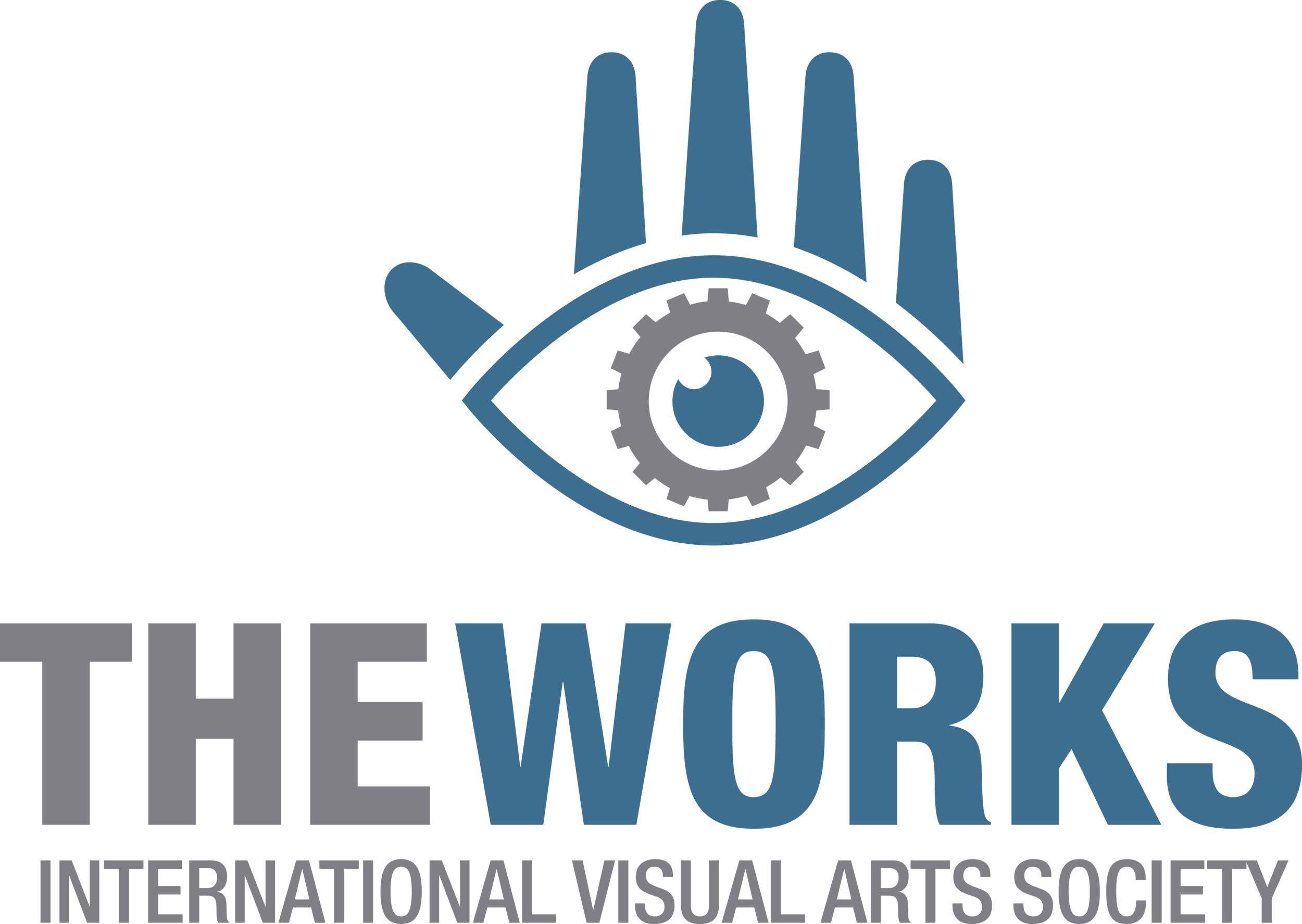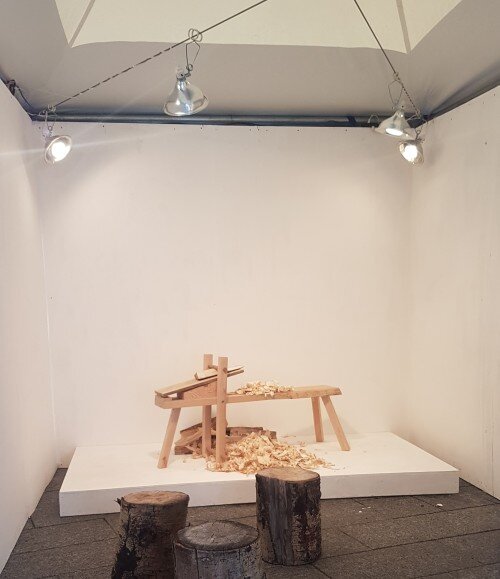The Work Behind the Walls
By: Claire MacMahon, Production Assistant.
Drawn In, Stephanie Medford, 2019
Before coming to work with The Works as a production intern, I can’t say I ever thought about the logistics of making a festival tent into a professional art gallery, but accomplishing this task is one of the most important parts of festival set up and take down. Luckily for my fellow interns and I, there were years of interns before us who figured out the logistics. We just had to learn them. So, here is what you need and how it works:
What you will need and how it works!
1) The walls
When lining a 20 by 20 ft tent with portable walls, one of the most important tools is teamwork. The walls each weigh over 150lbs so lifting them into place is impossible to accomplish on one’s own. Through teamwork, with some people in front, some behind and some even on ladders, we accomplished our task. This is when I realized how much of a team the production interns had really become. It was incredible to go from hardly knowing each other and ever imagining putting up a wall, to feeling comfortable putting them up as a cohesive team.
2) Paint tape and lots of Magic Erasers
Once the walls are up, the next step is a lot of fine tuning. When one thinks of a professional art gallery, pristine white walls usually come to mind. There are few tricks and tools we use to get as close to this as possible. The first is tape. Our walls are only four feet long, so we are left with a lot of seams to distract from the art. A quick solution is to cover them with white tape. Add a little paint on top and it could almost be part of the wall. Finally, when it comes to getting that pristine art gallery look, a box full of Magic Erasers can take the walls from looking worn and old to art ready.
3) Clip lights and a web of extension cords
When working outdoors, lighting can be unpredictable. On a nice sunny day the art may be very well lit, but when the clouds blow in, it is a very different story. Clip lights can help. Clip lights give us the ability to clamp them to the cables at the top of the tent, but there is only one plugin per tent. Extension cords are very useful and through the magic of a lot of winding and tucking of cords, we now have our gallery lit with minimal exposed cords.
One of our cleanest and most pristine galleries holds Stephanie Medford’s piece Drawn In, not because you can see all the details and hard work that I mentioned above, but because you can’t. It is beautifully lit with clean white walls, which if done right doesn’t draw your attention, but instead focuses it on the art. It is very rewarding to create an atmosphere where people can appreciate great artists and the art that we have within the gallery walls.
_____________________
About the author: Claire MacMahon is a mixed media artist who primarily works in sculpture. She is entering into her third year at Alberta University of the Arts in Calgary, where she has started exploring medias such as glass blowing and metal work. Recently Claire has been mixing new medias such as video and projection with traditional mediums like glass blowing and ceramics to create immersive environments within her work. Another passion of Claire’s that has started to bleed into her art is researching sea life and aquatic plants: she has incorporated this into her ceramic work.

